The Festival of Canyons is an annual event organised by UTS Outdoor Adventure Club. The club invites other university clubs and keen canyoners to a weekend of canyoning and socialising. This year, the Festival was held at Mt Wilson. Ellen Braybon was the organiser for UTSOAC.
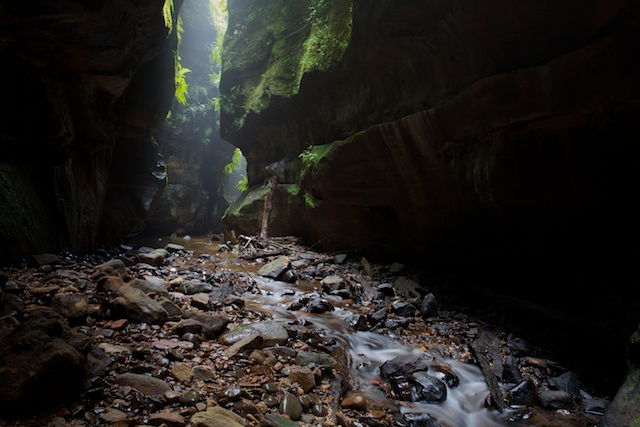
I was in a party that visited Claustral Canyon on the Saturday and in another party that visited Geronimo Canyon on the Sunday.
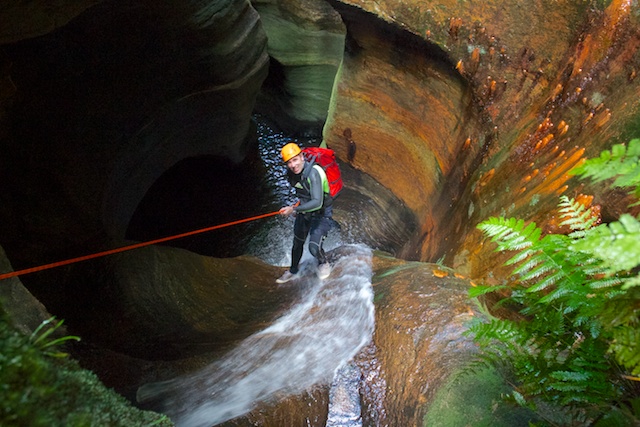
Mark on the first abseil – Claustral Canyon
The Claustral Canyon party were – Stacey, Col, Mark, Greg, Albert and myself. This was my first visit to the canyon via the “official” new route from near Mt Bell. The route was easy to follow and we found ourselves at the first water jump half an hour after leaving the cars. Then it was not far to the abseils.
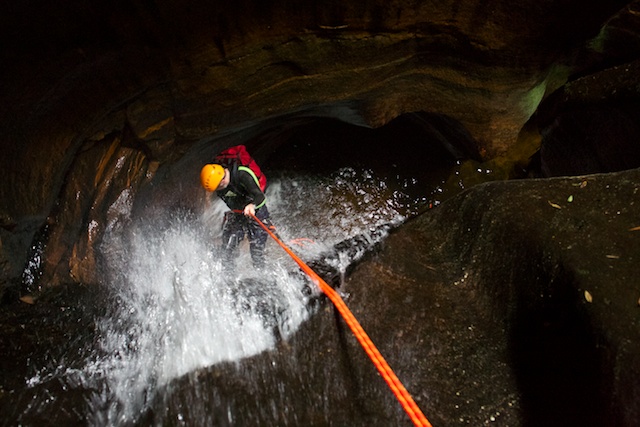
Mark on the second abseil
I was keen to take photographs – and I think we arrived at the abseils too early! I think it may have been better light later on. The canyon was a bit dark and gloomy – with none of the sunbeams that you often find there. But at least the lighting was fairly soft. Not too harsh for photos. A few of us took tripods and did a fair bit of photo-pfaffing. Thanks to the rest of the party for being patient.
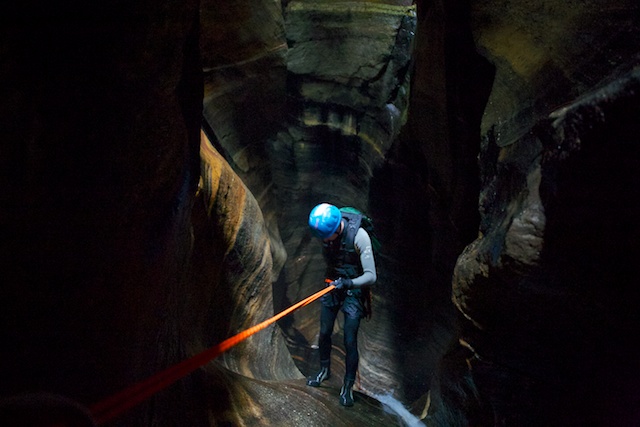
Greg on the third abseil
Canyons are always a hard environment to photograph. There are swims. Water drips down from the sides. They are often very dark and its hard to see what is what. It can be hard to focus the camera. The biggest problem is often the limited dynamic range of the camera. Too many canyon photos feature burnt out areas -where the sun shines directly on the canyon walls. For good photographs – these areas must be avoided from your photographs. HDR photos taken in canyons all seem to look appalling. Very unnatural!
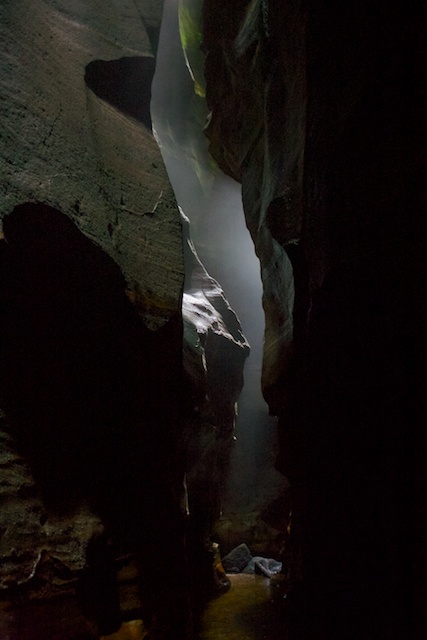
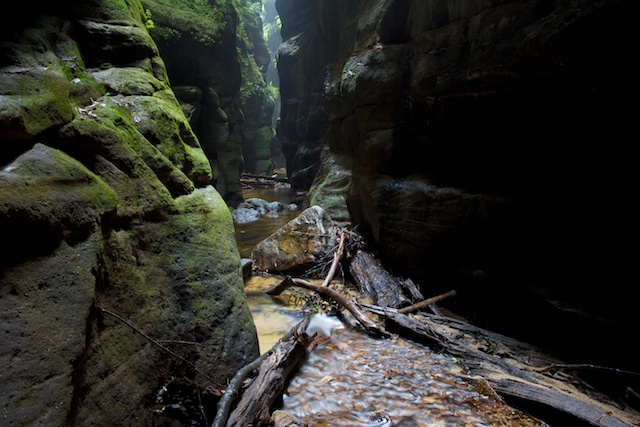
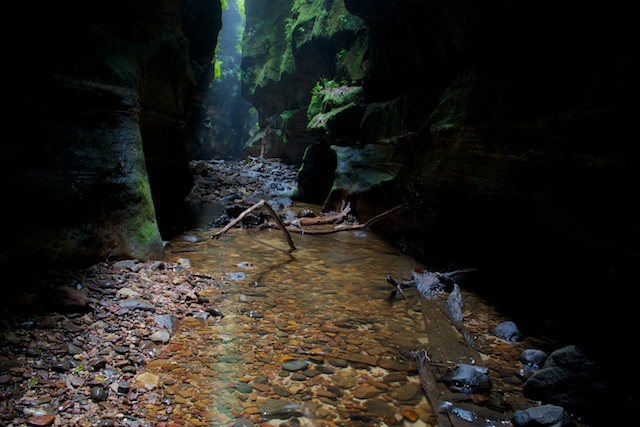
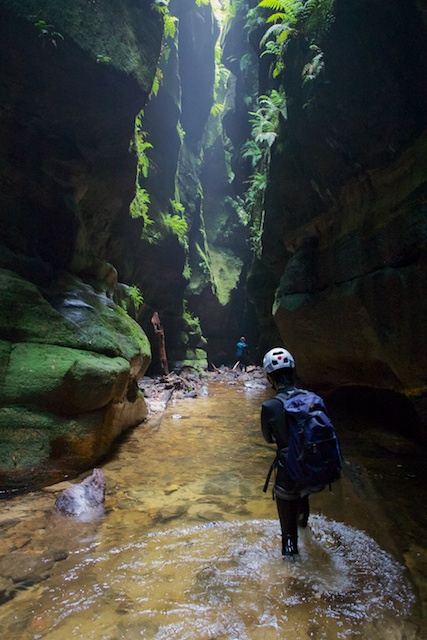
In harsh sunlight – you need to seek out areas of the canyon lit by reflected light. Lit only by reflected light. Sunbeams formed by mist in the canyons can often be a welcome and dramatic inclusion in canyon photographs. As a compositional element they can often be positioned to guide the eye right into the heart of the canyon.
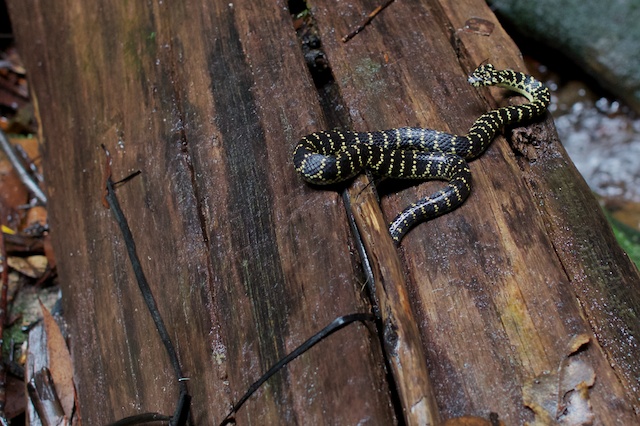
A small bread-headed snake in the canyon
On Saturday – there was very little sunlight in the canyon and no sunbeams. But dynamic range was still a problem. The bright areas were still far too bright. Even shooting a stop or two underexposed. Post processing can help – shooting raw – and then pulling back the highlights and opening up the dark shadow regions a bit (and being mindful of noise). Cropping is often needed to get rid of sections too bright that are burnt out.
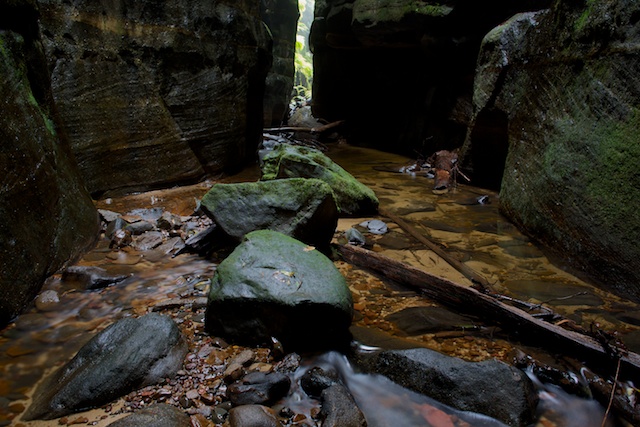
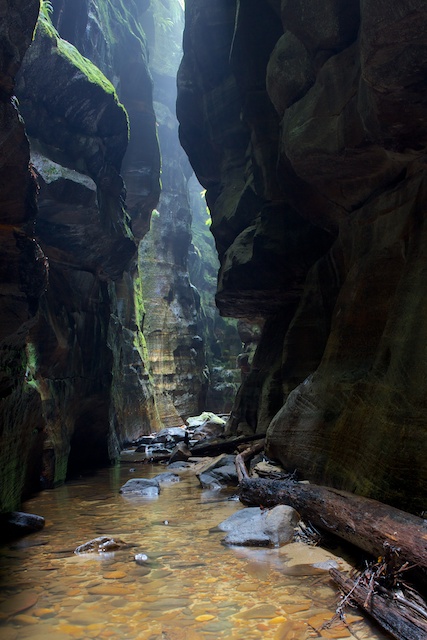
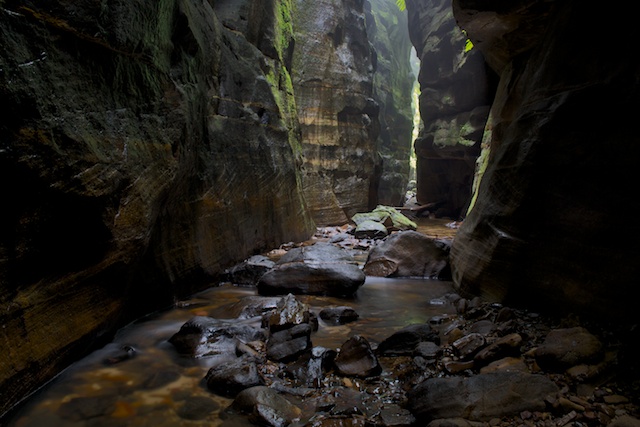
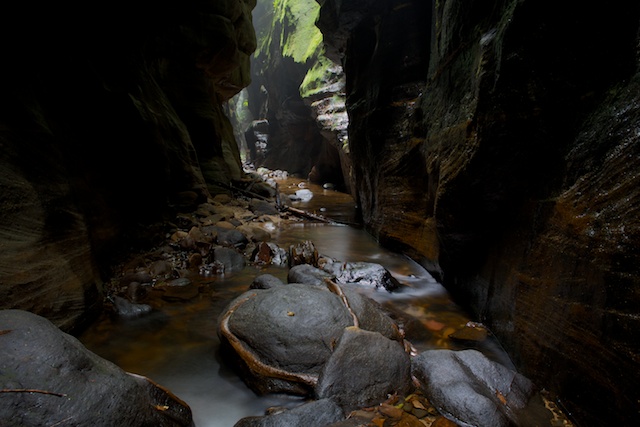
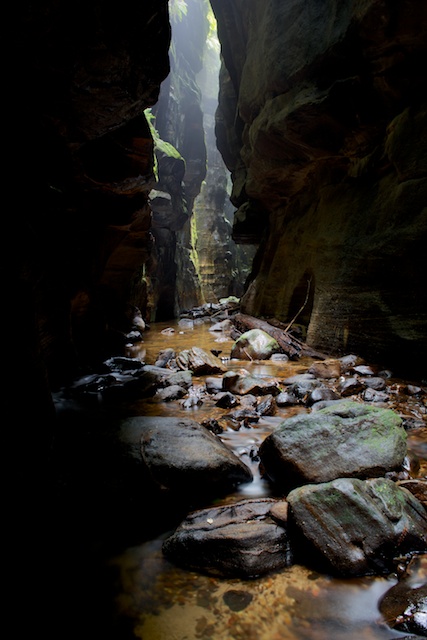
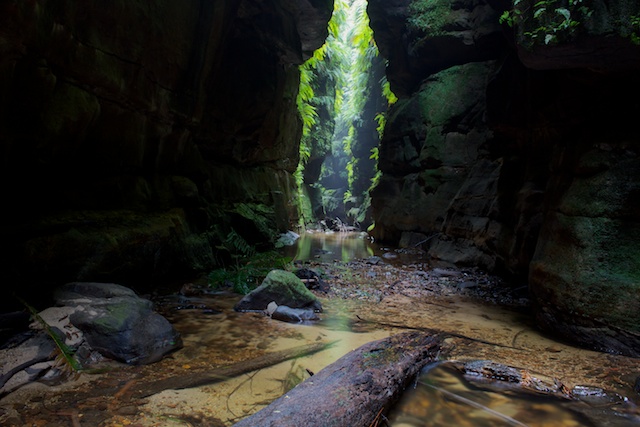
We were surprised to find we had the canyon to ourselves. And on a Festival of Canyons weekend! And pretty good weather.
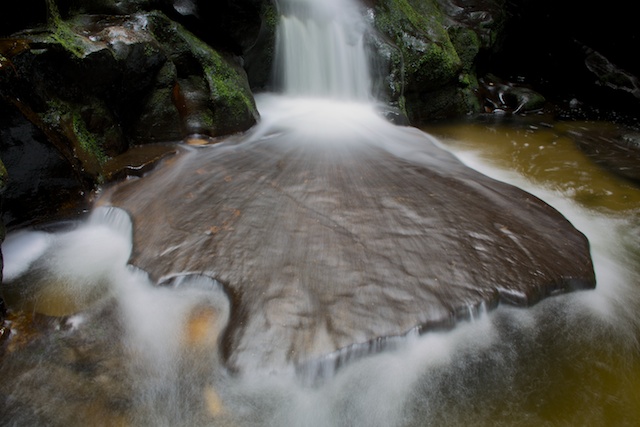
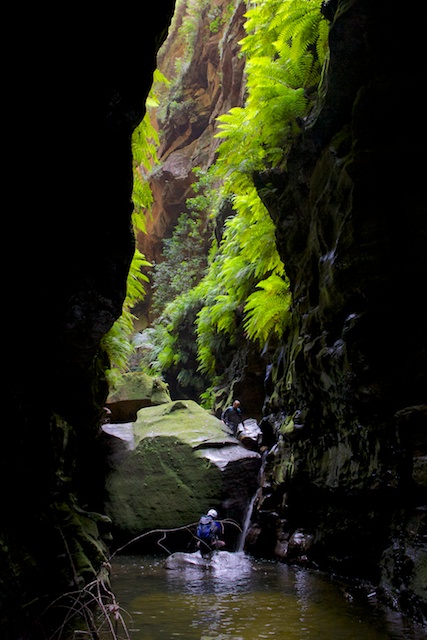
The walk out of the canyon does take a bit longer than the old way back to Mt Tomah. What will now be the standard route goes the old way up Rainbow Ravine and then around the east side of the Camels Hump and over the causeway to the flank of Mt Tomah. Then you follow the old track back down to the creek which you follow downstream for half an hour till you reach the track you used to come in. Then it is another half hour back to the carpark on the Bell Rd. The walk down the creek does involve a short swim and a few wades – but this is a very charming and beautiful creek – and a nice one to walk down.
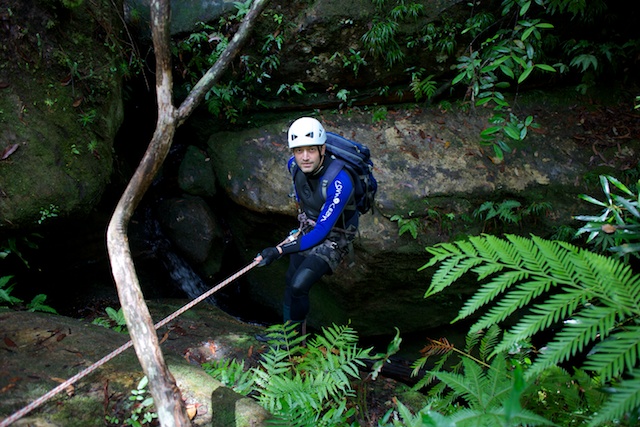
Albert on the first abseil – Geronimo Canyon
Back at the cars – we headed to join the party at Mt Wilson. There were lots of canyoners there and despite some light rain a merry time was had. We swapped stories of our canyon visits and discussed options for the next day. I mentioned we were the only party to visit Claustral Canyon. Apparently there had been eight parties down Whungee Wheengee Canyon that Saturday (and no reported congestion problems)
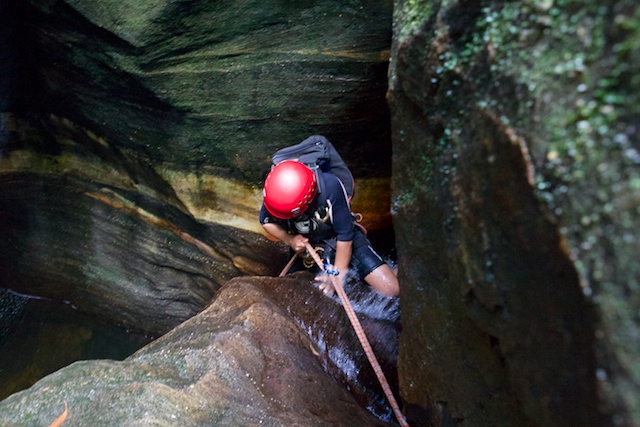
Su Li on the second abseil
On Sunday, I joined Martin from UTSOAC who was leading a trip down Geronimo Canyon. This seemed a good option – it had been a long while since I had visited that canyon. As well as Martin and myself – there were Su Li, Albert, Nicole and Karina on the trip.
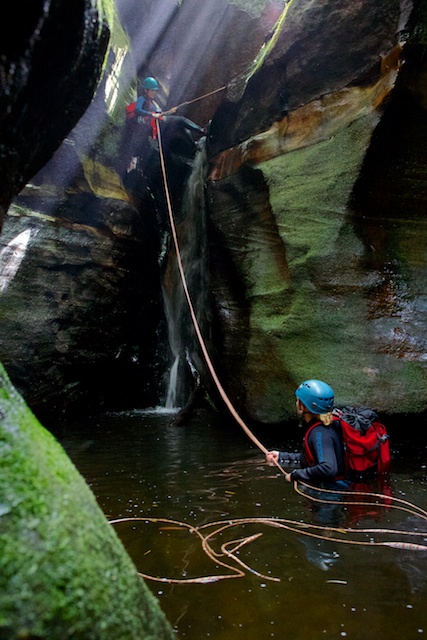
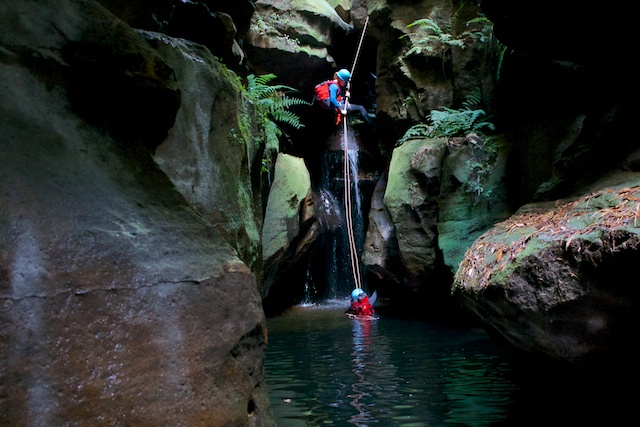
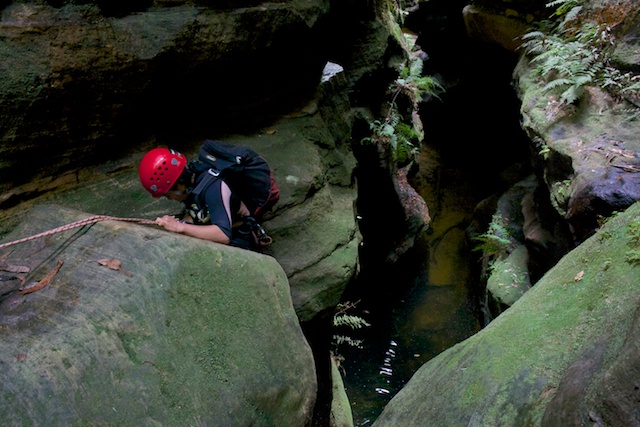
This was a pleasant day – and also a nice warm sunny day. A great day for a canyon.
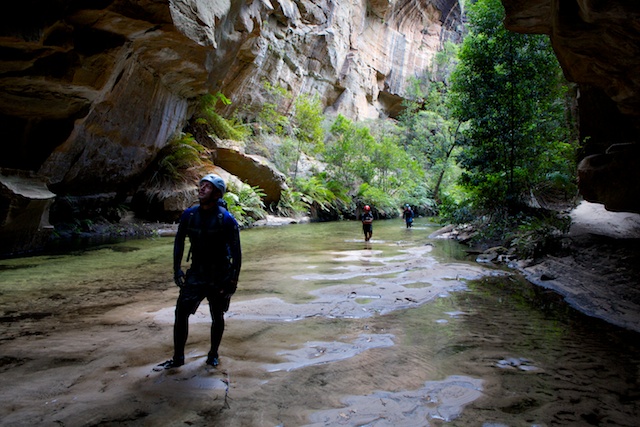
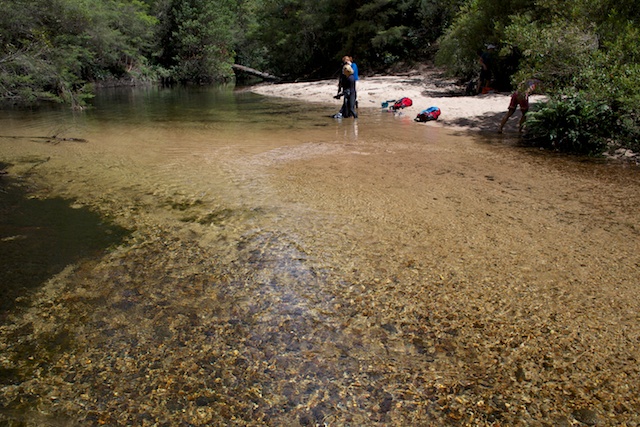
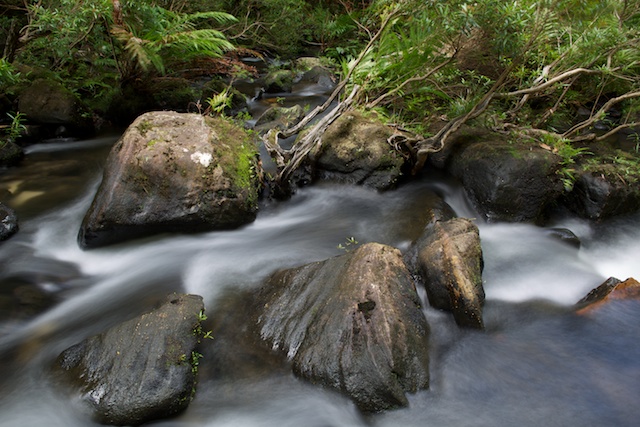
Thanks to Ellen and UTSOAC for organising the Festival. More photos of Claustral Canyon can be found on my website here, and Geronimo Canyon here.

HDR in general doesn’t seem to work well, unless you want a look that isn’t natural. What I have seen that works, at least with landscapes, is taking multiple exposures and then carefully merging them together in Photoshop. Only for people with lots of time.
Awesome blog David – nice shots mate!
There is an alternative to using HDR processing when you bracket.
Its a plug-in for Lightroom called LR/Enfuse.
It doesn’t use the tone-mapping process like Photomatix etc.
It gives quite natural results & is used by some architectural photographers as they are looking for accuracy & don’t want any funky HDR results.
It gives you similar results to using layers & masks in Photoshop without having to spend a heap of time. May struggle a bit with the extreme dynamic range of some canyons.
Worth a look.